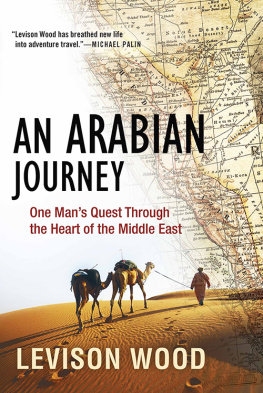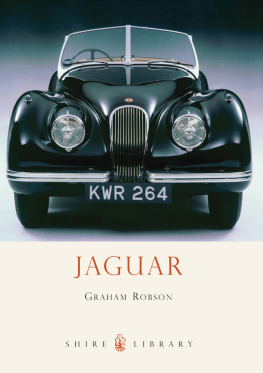First published in 1990 by The Crowood Press Ltd, Ramsbury, Marlborough, Wiltshire, SN8 2HR
www.crowood.com
This e-book edition first published in 2011
The Crowood Press Ltd 1990
All rights reserved. This e-book is copyright material and must not be copied, reproduced, transferred, distributed, leased, licensed or publicly performed or used in any way except as specifically permitted in writing by the publishers, as allowed under the terms and conditions under which it was purchased or as strictly permitted by applicable copyright law. Any unauthorised distribution or use of this text may be a direct infringement of the authors and publishers rights, and those responsible may be liable in law accordingly.
ISBN 978 1 84797 360 3
The photographs in this book were kindly supplied by The Motoring Picture Library, Beaulieu.
The line drawings on pages are reproduced courtesy of Paul Skilleter.

Early E-type: a 1961 3.8-litre roadster, fitted with the optional hard-top that subsequently became available, from May 1962, and endured throughout the production life of the Series I and II cars.
Acknowledgements
The majority of the original black and white photographs in this Crowood AutoClassic comes from the National Motor Museums Beauliu photographic library and I am also grateful to Jaguar Cars and Paul Skilleter for providing additional pictures.
My thanks are due to Bob Murray, editor of Autocar & Motor, for his permission to reproduce E-type road tests from past issues of Autocar and Motor magazines. I am also grateful for the assistance provided by Arnold Bolton of Jaguar Cars.
Also the clubs, namely Rosemary Hinton (Jaguar Drivers Club) Gordon Wright (Jaguar Enthusiasts Club) and John Bridcutt (Jaguar Car Club) kindly provided information about their respective organisations. Thanks are also due to Colin Ford, E-type technical adviser to the Jaguar Enthusiasts Club, for advice on some of the practical aspects of E-type ownership.
If youre a past, present, prospective E-type owner, or just like classic cars, I trust that youll be interested in what follows.
Jonathan Wood
THE JAGUAR E-TYPE IN CONTEXT
Prototypes
| December 1956 | Work underway on 2.4-litre two-seater: what will become the E-type |
| 15 May 1957 | Prototype E-type, unofficially designated E1A, tested at the Motor Industry Research Association (MIRA) |
| July 1958 | Second (Pearl Grey) E-type prototype running |
| July 1959 | Three E-type prototypes, E1A, Pearl Grey and Cotswold Blue cars, being evaluated |
| 27 February 1960 | E2A sports-racer completed |
The E-Type
| 15 March 1961 | E-type launched on Press Day at Geneva Show |
| October 1964 | 4.2-litre E-type launched at London Motor Show |
| March 1966 | 2 + 2 E-type launched |
| 11 July 1966 | Jaguar announces that it will merge with the British Motor Corporation to form British Motor Holdings |
| 14 May 1968 | British Motor Holdings merges with Leyland Motor Corporation to form British Leyland Motor Corporation |
| October 1968 | Series II E-type launched at London Motor Show |
| July 1969 | William Heynes retires as Jaguars chief engineer |
| July 1970 | Malcolm Sayer dies |
| March 1971 | Series III E-type launched |
| 3 March 1972 | Sir William Lyons retires as chairman of Jaguar Cars and becomes its president. He is replaced by F R W Lofty England |
| 6 October 1973 | Start of Yom Kippur war |
| 16 October 1973 | Gulf States announce seventeen per cent rise in oil prices, so triggering a world recession |
| January 1974 | Lofty England announces his retirement |
| 913 September 1974 | The last E-type built during this working week |
| 27 November 1974 | British Leyland meets Department of Industry and banks as it is expected to reach the limit of its 152 million overdraft facility in December |
| 18 December 1974 | Government commissions Ryder Report |
| February 1975 | Jaguar announces E-type to cease production |
The Right Company
There is nothing more typically English than the Jaguar and Sir William Lyons is the typical Englishman.
The Motor, 15 March 1961
There are few who would argue that the E-type Jaguar is the most significant British sports car of the post-war years. Derived from the Le Mans winning D-type, it was also the fastest road-going Jaguar of its day and the firms most numerically successful two-seater. Not only was the car competitively priced but, above all, the E-type could only have been a Jaguar, such was the sheer beauty and assurance of its unique lines. The E-type was a head turner when it was new. It still is today.
Yet, ironically, this most memorable car was one of the few Jaguars not to have been styled by the companys shrewd, talented chairman, Sir William Lyons. That accolade must go to the firms aerodynamicist, Malcolm Sayer who also has the Ds lines to his credit while chief engineer William Heynes was responsible for its sophisticated and unique mechanical structure. When Jaguar introduced its E-type in 1961, it represented the ultimate expression of a line that had begun, back in 1934, when the newly formed S.S. Cars introduced its first sports car.
Sir William Lyons (19011985)
Immaculate in a dark suit, Lyons was, by the E-type years, the highest paid executive in British industry, with a salary of 100,000 a year. He also possessed a flair for appointing talented subordinates, whom he persisted in addressing by their surnames. Sir William was enigmatic, cautious, financially canny, and above all, a supreme stylist. Although he drew on continental and American design influences for his cars, he always managed to create the distinctive and stylish Jaguar look and this usually ensured a long production run, which kept costs down. When it came to styling exercises, Lyons rarely relied on scale models but opted instead for full size mock-ups. These were often photographed against the background of Wappenbury Hall, near Leamington Spa, where he lived the life of the country gentleman and was proud of his prize-winning herd of Suffolk sheep.
Ironically, Sir William was not responsible for the lines of his most memorable sports car, the E-type. These were the work of aerodynamicist Malcolm Sayer. In fact, Lyons was always a little lukewarm about the model. Although it has been suggested that this was because he had not created its memorable lines, the real reason must surely be that SS, and later Jaguar, was essentially a manufacturer of saloon cars, with the low production sports models playing second fiddle to them in terms of volume, and thus profitability. Significantly, the XJ6, a saloon, was his all-time favourite Jaguar.
Lyons always ran a tight ship, It was an approach perhaps best recalled by an incident that occurred at Browns Lane during a winter when the factory, and its grounds, were covered with a deep fall of snow. Lofty England took the opportunity of getting some of Jaguars employees to clear snow away from the office block in anticipation of Sir Williams arrival. When Lyons did appear, he told England: Thats very kind of you well done. But what do the men do normally how is it that we can spare them?




















